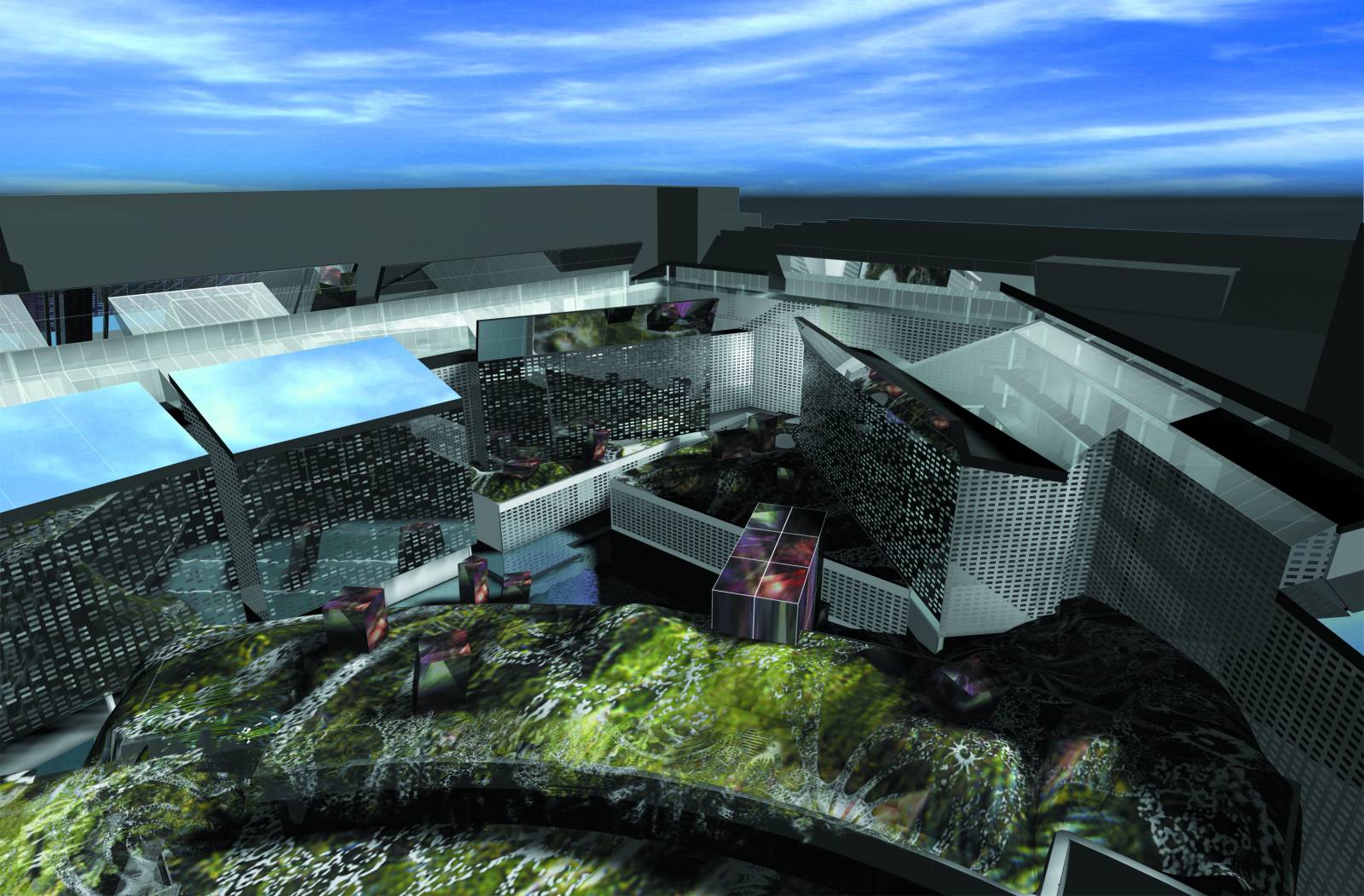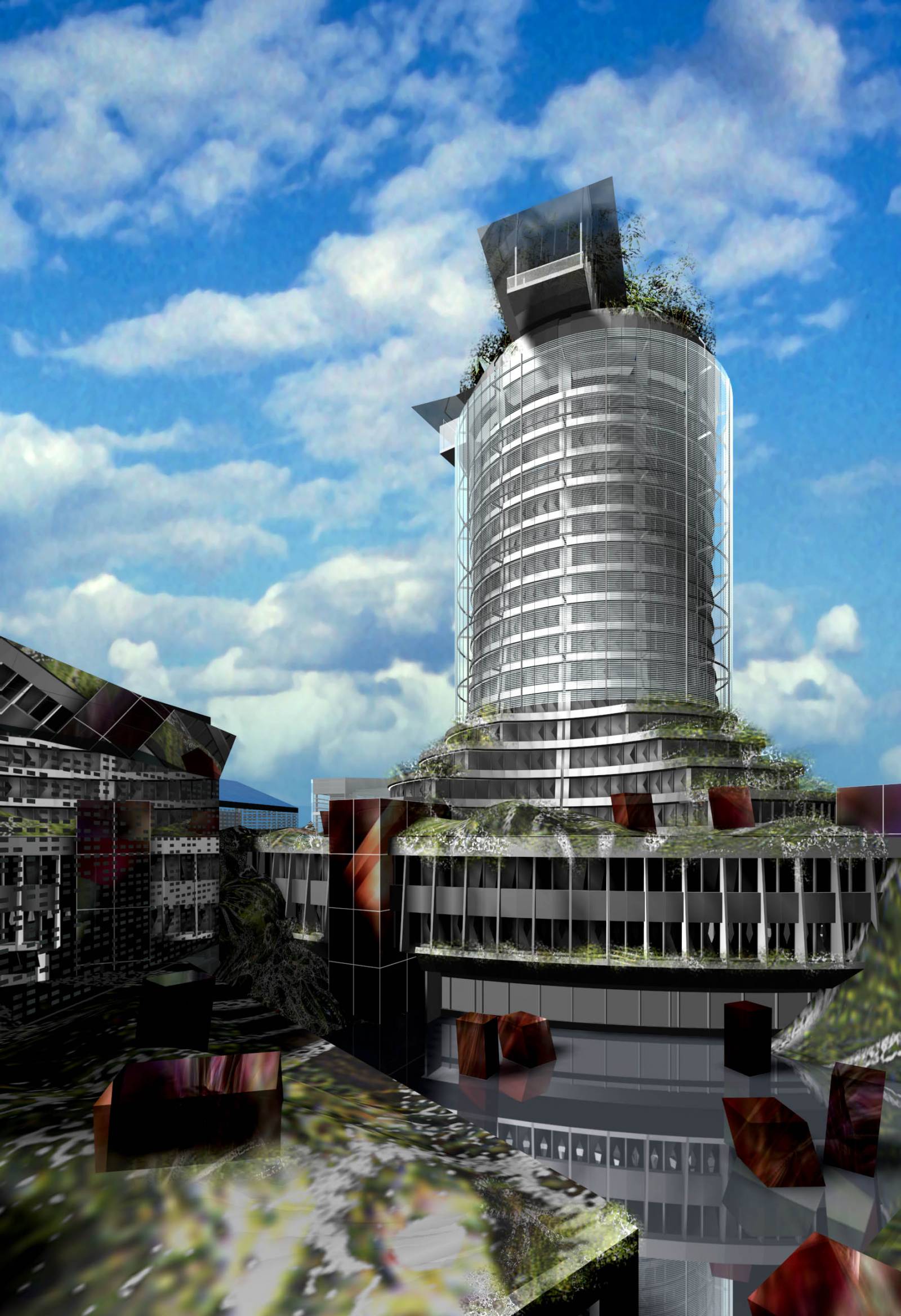Bank for International Settlements (BIS)
- Basel, Switzerland
Fragmentations, brilliance and fractals
The BIS tower is a very particular building. Very dated. Presently, the relation between the tower and its immediate environment is neither conflictual nor harmonious.
The question is difficult. How can we find some indication of the relationship of this kind of architecture within a new environment to be created in two or three phases?
It is a problem of urban landscape and the invention of a particular character in relation with this particular object.
The fist decision to make is one of an urban logic: We are here in a system of blocks, and urban alignment along the streets. Should we keep it or not?
Insofar as control of the land is not fixed for the block concerned – since two buildings are remaining in the first phase – it is dangerous to wager on future and uncertain decisions to divide the block and to propose isolated buildings – a collection of small towers in a landscape, for example.
Therefore, the choice is to reinforce the presence of the Heumattstrasse, Centralbahnstrasse and Gartenstrasse and to deepen a contextual dialogue with the neighbouring buildings, the tower becoming a sort of “dungeon” surrounded by lived-in walls. But this metaphor is not defensive. On the contrary, I wish to create the desire to go in, to show inside instead of hiding it.
The “in-between”, the interstital space then becomes very important because it is the only space that can establish the connection between the “dungeon of the 70’s” and the “surrounding walls of Year 2000”. Through these the visitor perceives a scenery with a strong enough image for it to change that of the tower.
I propose a game of light and views, of geometry and conjunctions.
From the tower’s offices, the view on this garden must reflect the light, the colour of the sky and give the sense of living in a unique place. From the new buildings’ offices, the image of the tower must be softened by the presence of the foreground of the garden and the nature of a facade which is not based on an absolute transparency – because nothing is more disagreeable than feeling constantly seen from an overhanging facing.
The concept consists of creating, through the fragmentation of surrounding buildings and roofs, a recomposition of pieces of a landscape which is made up of an unexpected, precise image. The matrix would be a mathematical image, a fractal, a dragon of Mendelbrot whose geometry is in relation with a certain aesthetic of the 70’s, capable to bring some quality to the tower BIS.
The mirror-roofs reflect the image of the sky and other surfaces in the overhang of these roofs, which give a view of the reflected images of the garden and the inner alleyways. The garden is made of numerous water basins which, themselves, reflect the light of the sun, the uncertainty of the skies and the reflection of the environment.
The inner facades of the new buildings are made of random grids within a semi-reflective wall. Each piece of glass is made on the same module and the vision from the inside is a screen, much like, in the past, behind the window frames of a classical window.
The passer by in the Heumattstrasse, Centralbahnstrasse and Gartenstrasse sees in transparency through the ground floor, but also through the gaps between the buildings the brilliance of the garden and its vegetation whose colours and species intrigue him. He notices, from further far away, the mirror roofs and canopies which reflect the images of the sky, the garden and the buildings. Decomposition, composition, fragmentation of a mysterious landscape.
The facades on the Heumattstrasse, Centralbahnstrasse and Gartenstrasse are mostly made of glass. They are protected by sunscreens and view breaks in silk-screened glass whose orientations change according to the hours and the desires of the office’s users.
Primarily the buildings Visana and Rex are kept. But the concept of the fragile surrounding wall is already visible. Secondly, this surrounding wall is replaced by the buildings and, in a third step, the entrance of the bank is treated anew in order to close the block and to give a livelier image, more welcoming than the current filled volume. A large generously lit auditorium – with meeting rooms – would be created. Concerning the tower itself, we propose three successive adaptations:
- To reinforce the vegetation of the terraces and the first floors in continuity with the garden
- To create a solar protection screen with adjustable silkscreened glass layers to lighten the contrast with the new buildings
- To redesign the last floors for banquet rooms and private lounges within a roof garden which will also give value to the outline of the tower.
A particular response to a particular situation: only hyper specificity is able to give quality to the relation between the tower and the new area, thus to determine the image of the BIS, and, only modernity adapts this image to the mutations of the world.
Jean Nouvel



